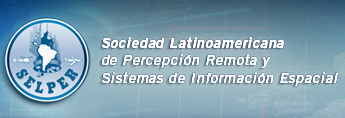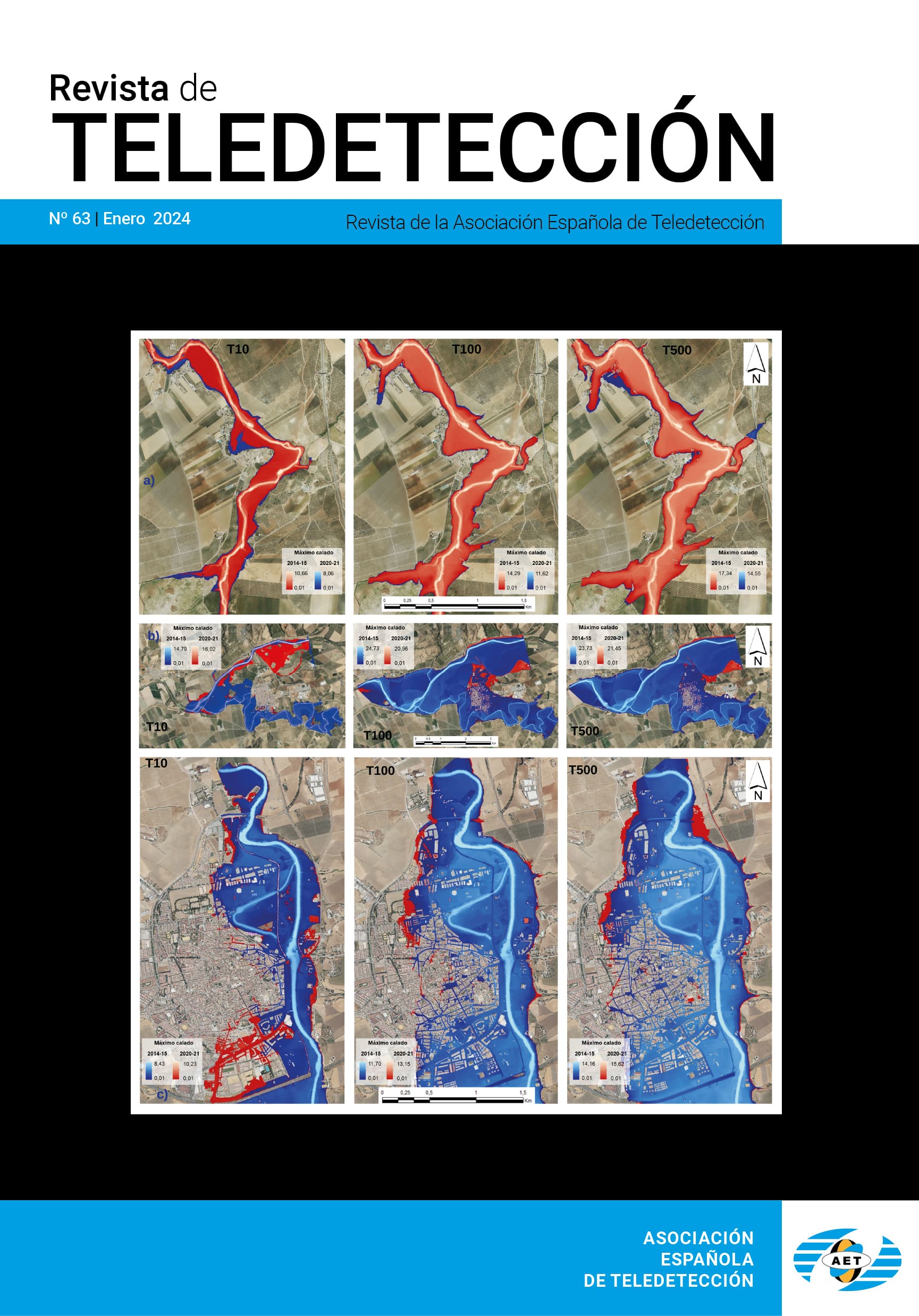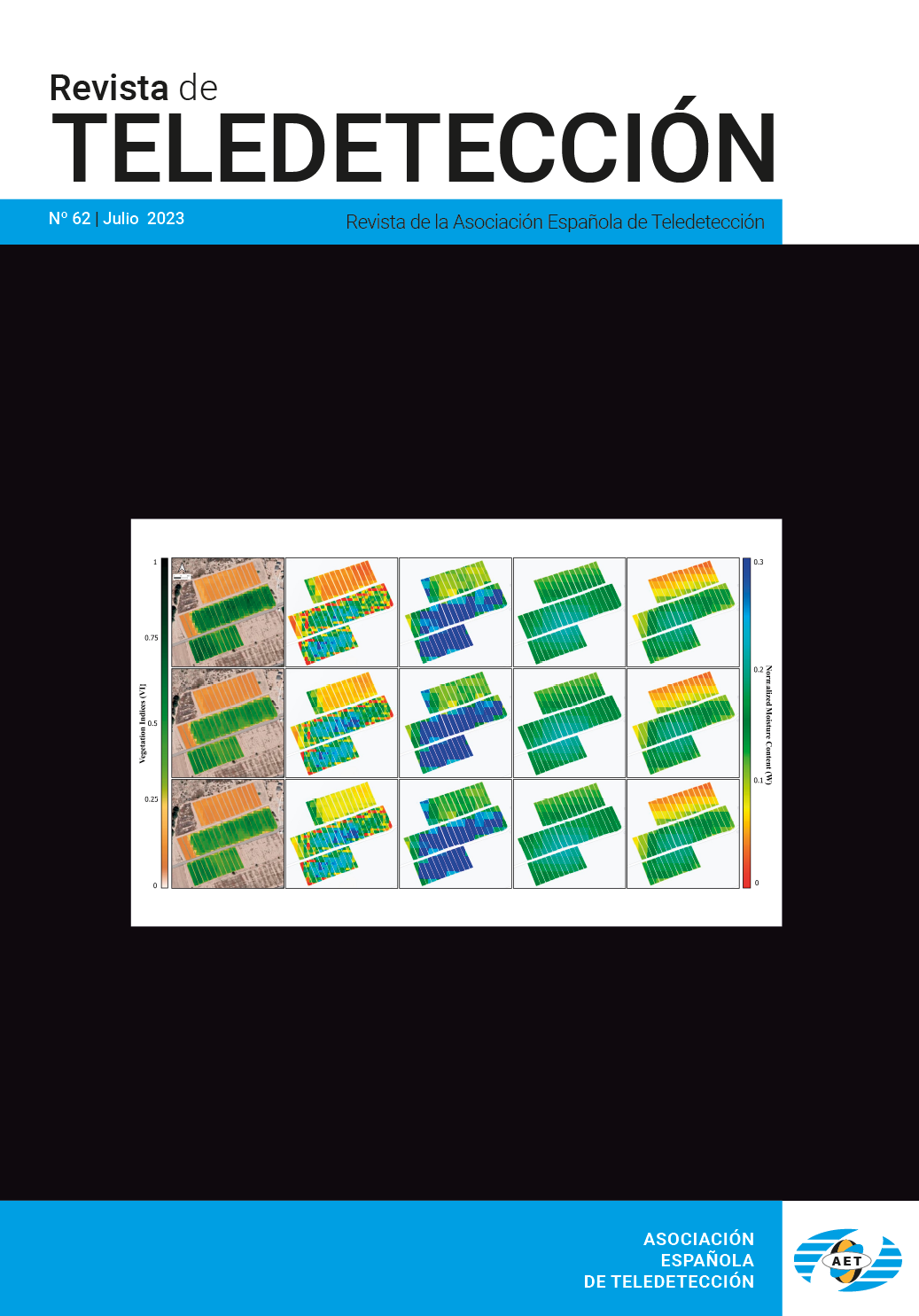Estimación de la reflectividad superficial mediante datos del sensor aéreo AHS y comparación con el producto MODIS
J. A. Sobrino (sobrino@uv.es)
B. Franch
RESUMEN
En este artículo se evalúa el producto MODIS de reflectividad superficial a través de su comparación con datos aéreos. En este sentido se ha desarrollado una metodología para obtener la reflectividad superficial y se ha aplicado a datos adquiridos mediante el sensor aerotransportado Airborne Hyperspectral Scanner (AHS). Se ha comparado la reflectividad superficial obtenida con la estimada por MODIS considerando la equivalencia entre las bandas 8 (centrada en 658 nm) y 15 (centrada en 862 nm) de AHS y las bandas 1 y 2 de MODIS respectivamente. El estudio se ha desarrollado en el contexto de la campaña CEFLES2 (CarboEurope, FLEX and Sentinel-2), la cual se desarrolló en Les Landes (Francia) durante tres periodos, abril, junio y septiembre de 2007. Con esta metodología se obtiene la reflectividad superficial de las imágenes AHS con un Root Mean Square Error (RMSE) al comparar con datos in situ de 0,02 en el visible y 0,05 en el infrarrojo cercano. La evaluación del producto MODIS de reflectividad superficial (MOD09GQ) se ha desarrollado comparándolo con la estimación mediante AHS. Los resultados muestran un RMSE de 0,03 en el visible y 0,08 en el infrarrojo cercano.
PALABRAS CLAVE: MODIS, reflectividad superficial, espesor óptico de aerosoles, CEFLES2, corrección
atmosférica, AHS.
ABSTRACT
In this paper the MODIS surface reflectance product is evaluated through its comparison with airborne
data. In this way it has been developed a methodology to obtain the surface reflectance in the Visible and Near Infrared (VNIR) spectral range and it has been tested over airborne data by processing high-resolution images acquired with the Airborne Hyperspectral Scanner (AHS) sensor. AHS and MODIS surface reflectance images have been compared considering the equivalence between AHS bands Band 8 (centred on 658nm) and Band 15 (centred on 862 nm) and MODIS Band 1 and Band 2 respectively. The study has been performed in the framework of the CEFLES2 (CarboEurope, FLEX and Sentinel-2) campaign, which was developed in Les Landes region (France) during three different periods, April, June and September, on 2007. With this methodology the surface reflectance can be obtained with a Root Mean Square Error (RMSE) of 0.02 in the red spectral region and around 0.05 in the near infrared spectral region in comparison with ground measurements. Regarding the evaluation of the MODIS Collection C5 surface reflectance product (MOD09GQ), it has been performed by comparing with the AHS estimations. The results report a RMSE of 0.03 in the red spectral region and 0.08 in the near infrared spectral region.
KEYWORDS: MODIS, surface reflectance, aerosol optical thickness, CEFLES2, atmospheric correction, AHS.
PULSE AQUI PARA DESCARGAR EL ARTÍCULO COMPLETO




















